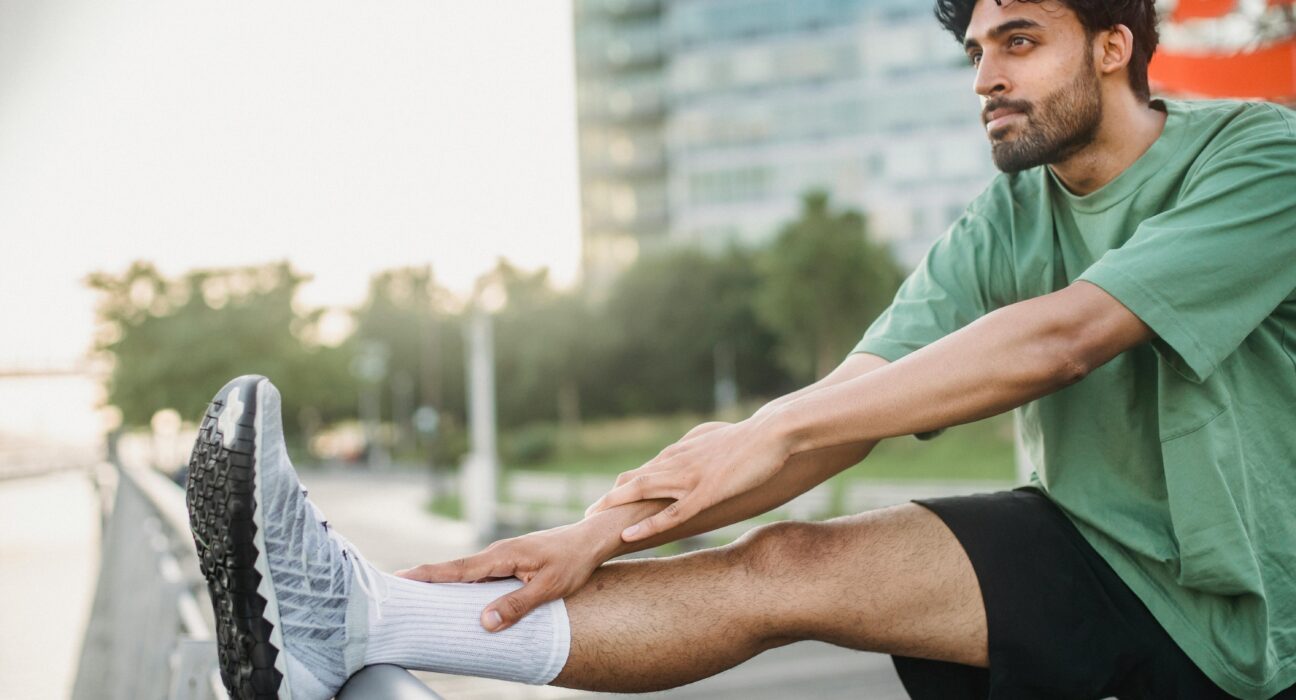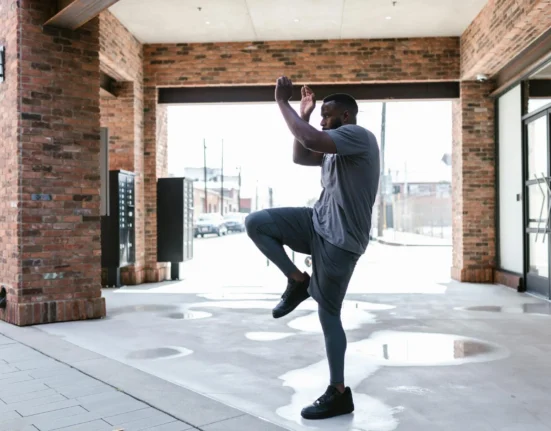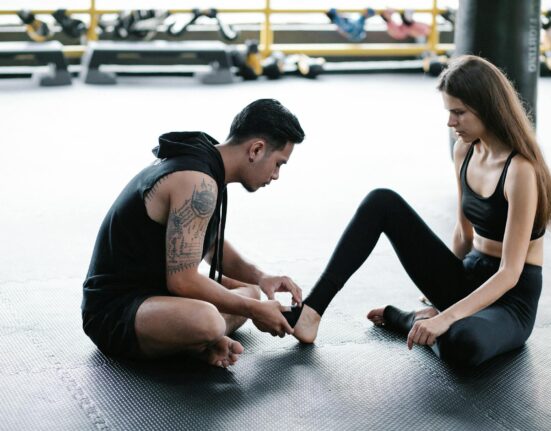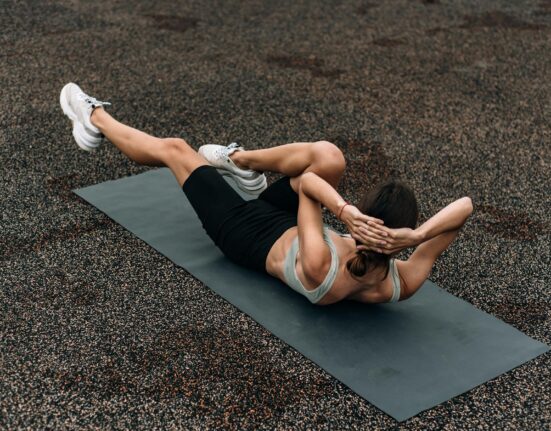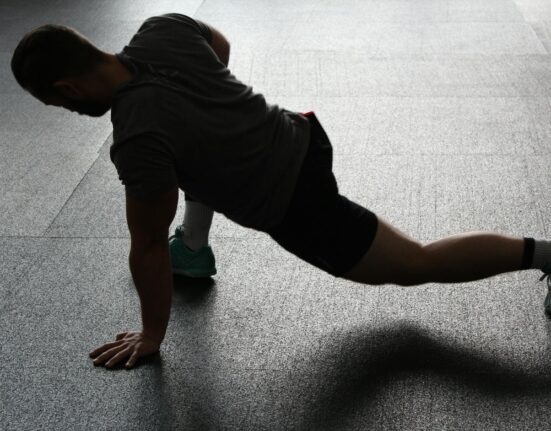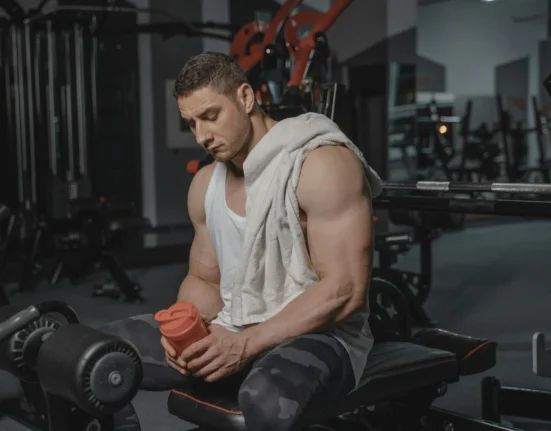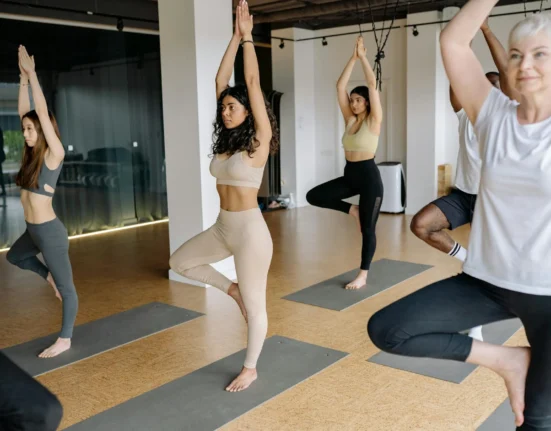Improving balance and coordination is key to staying healthy and fit. It helps you move with confidence and prevents injuries. What are the best exercises to boost your balance and coordination? We’ll cover the top 5 exercises that can help. They’re simple, effective, and easy to do – and they can make a big difference in how you feel and move.
Why Balance and Coordination Matter
Balance and coordination are essential components of our overall health and fitness. They play a critical role in our daily lives, enabling us to move with confidence and perform various activities without struggling. But have you ever stopped to think about why balance and coordination are so important?
 Photo by Pavel Danilyuk
Photo by Pavel Danilyuk
Reducing Injury Risk
Improving balance and coordination can significantly reduce the risk of injuries, especially in older adults and athletes. According to a study published in the National Center for Biotechnology Information, balance and coordination exercises can help stimulate the sensory and neuromuscular control mechanisms, leading to better overall balance and reduced risk of falls. This is particularly important for older adults, as falls can lead to severe injuries, such as hip fractures and head trauma. By incorporating balance and coordination exercises into their daily routine, individuals can significantly reduce their risk of injury and maintain their independence.
Improving Athletic Performance
Balance and coordination exercises can also enhance athletic performance and reaction time. When you have good balance and coordination, you can move more efficiently and respond quickly to changing situations. This is especially important for athletes who participate in sports that require quick movements, such as soccer, basketball, and tennis. By improving their balance and coordination, athletes can improve their overall performance, reduce their risk of injury, and gain a competitive edge. As noted by Western Physiotherapy and Health, having good balance helps in preventing falls, injury, and simply making daily activities easier to perform.
Top 5 Exercises to Improve Balance and Coordination
Improving balance and coordination requires practice and patience, but with the right exercises, you can achieve significant improvements. Here are five effective exercises to help you boost your balance and coordination.
 Photo by Lena Helfinger
Photo by Lena Helfinger
Single-Leg Squats:
To perform a single-leg squat, start by standing on one leg, keeping the other foot lifted off the ground. Slowly lower your body down into a squat, keeping your back straight and your core engaged. Push through your heel to return to standing, and repeat on the other leg. It’s essential to focus on your balance and control throughout the movement. According to Healthline, balance exercises like single-leg squats can help improve your overall balance and reduce the risk of falls.
Balance Boards and BOSU Ball Training:
Balance boards and BOSU balls are excellent tools for improving balance and coordination. These devices challenge your balance and force you to engage your core and leg muscles to maintain stability. You can perform various exercises on a balance board or BOSU ball, such as single-leg squats, lunges, and calf raises. The NHS recommends using balance boards and BOSU balls as part of a balance exercise routine to improve overall health and mobility. As you practice with these tools, you’ll notice significant improvements in your balance and coordination. The other exercises that can help improve balance and coordination include heel-to-toe walking, single-leg standing, and standing on a foam pad or pillow. Heel-to-toe walking involves walking along a straight line, placing the heel of one foot directly in front of the toes of the other foot. This exercise challenges your balance and requires concentration and control. Single-leg standing involves standing on one leg, with the other foot lifted off the ground, and can be modified to include arm movements or weight shifts to increase the challenge. Standing on a foam pad or pillow requires engagement of the core and leg muscles to maintain balance and can be an effective way to improve overall balance and coordination. By incorporating these exercises into your daily routine, you can significantly improve your balance and coordination, reducing your risk of injury and enhancing your overall health and fitness.
Incorporating Balance and Coordination Exercises into Your Fitness Routine
Incorporating balance and coordination exercises into your fitness routine can be a great way to improve your overall health and fitness. By adding these exercises to your daily routine, you can improve your balance, reduce your risk of injury, and enhance your athletic performance. But how do you get started?
 Photo by cottonbro studio
Photo by cottonbro studio
Creating a Balance and Coordination Workout Plan
Creating a workout plan that includes balance and coordination exercises is essential to achieving your fitness goals. To get started, you’ll need to set specific goals and track your progress. Ask yourself, what do you want to achieve with your balance and coordination exercises? Do you want to improve your overall balance, or do you want to enhance your athletic performance? Once you have a clear idea of your goals, you can start creating a workout plan that includes a variety of exercises to help you achieve them. For example, you can start with simple exercises like single-leg squats, heel-to-toe walking, and standing on a foam pad or pillow. As you progress, you can add more challenging exercises like balance boards and BOSU ball training. The National Health Service recommends creating a workout plan that includes a mix of balance and coordination exercises, as well as strength training and cardio exercises. According to Healthline, balance exercises like single-leg squats can help improve your overall balance and reduce the risk of falls. You can also find more exercises and tips on the Mayo Clinic website, which provides a range of balance exercises that you can do at home. Additionally, the American Physical Therapy Association recommends incorporating exercises that promote balance and coordination into your daily routine, such as standing step training and heel-to-toe standing or walking.
Common Mistakes to Avoid When Performing Balance and Coordination Exercises
When performing balance and coordination exercises, it’s essential to be aware of common mistakes that can hinder your progress or even lead to injury. One of the most critical aspects of balance and coordination training is using proper form and technique.
Importance of Proper Form and Technique:
Proper form and technique are crucial when performing balance and coordination exercises. Using improper form or technique can lead to injury, poor results, or a lack of progress. For example, when performing a single-leg squat, it’s essential to keep your back straight, engage your core, and lower your body down slowly. If you don’t use proper form, you may put unnecessary strain on your joints or muscles, leading to injury. According to the American Council on Exercise, balance exercises like single-leg squats can help improve your overall balance and reduce the risk of falls. To avoid common mistakes, it’s also essential to warm up properly before starting your balance and coordination exercises. A good warm-up can help increase blood flow, reduce muscle stiffness, and prepare your body for physical activity. You can start with some light cardio, such as jogging in place or jumping jacks, followed by some dynamic stretching, like leg swings or arm circles. Another common mistake is not listening to your body and pushing yourself too hard. Balance and coordination exercises can be challenging, especially if you’re new to them. It’s essential to start slowly and gradually increase the difficulty as you become more comfortable. If you experience any pain or discomfort, stop immediately and rest. Additionally, not incorporating variety into your balance and coordination routine can lead to plateaus and boredom. Try to mix up your exercises and include a variety of activities, such as balance boards, BOSU ball training, and heel-to-toe walking. You can also incorporate exercises that challenge your reaction time, such as catching a ball or reacting to a stimulus. By being aware of these common mistakes and taking steps to avoid them, you can get the most out of your balance and coordination exercises and achieve your fitness goals. Remember to always prioritize proper form and technique, warm up properly, listen to your body, and incorporate variety into your routine. With practice and patience, you can improve your balance and coordination and enhance your overall health and fitness.
For more information on balance and coordination exercises, you can visit the National Institute on Aging website, which provides a range of exercises and tips to help older adults improve their balance and coordination.
Conclusion and Next Steps
Now that you’ve learned about the top 5 exercises to improve balance and coordination, it’s time to put them into practice. Remember, improving balance and coordination takes time and patience, but with consistent practice, you can achieve significant improvements.
 Photo by Yan Krukau
Photo by Yan Krukau
Getting Started with Balance and Coordination Exercises
To get started, begin with simple exercises like single-leg squats, heel-to-toe walking, and standing on a foam pad or pillow. As you progress, you can add more challenging exercises like balance boards and BOSU ball training. It’s essential to listen to your body and only do what feels comfortable and safe. If you’re new to balance and coordination exercises, consider consulting with a healthcare professional or fitness expert to create a personalized workout plan.
Resources for Further Learning and Support
For more information on balance and coordination exercises, you can visit websites like Healthline or NHS. These resources provide a range of exercises, tips, and guidance to help you improve your balance and coordination. Additionally, you can check out Mayo Clinic or American Physical Therapy Association for more detailed information and expert advice. By incorporating balance and coordination exercises into your fitness routine and utilizing these resources, you’ll be well on your way to improving your overall health and fitness. So, what are you waiting for? Start your balance and coordination journey today and take the first step towards a healthier, more balanced you.


